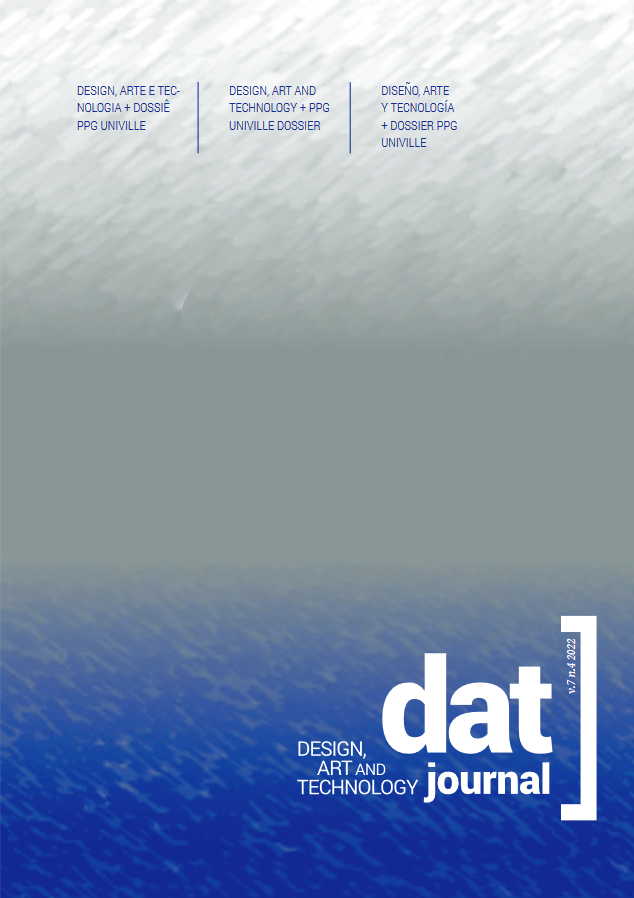La especulación espacial a través del Juego de la vida de John Conway: fomentando la creatividad con algoritmos autónomos
DOI:
https://doi.org/10.29147/datjournal.v7i4.646Palabras clave:
Juego de la Vida , Especulación espacial , Planta Baja, Dieseño ArquitectonicoResumen
Este artículo busca presentar un experimento con un autómata celular inspirado en el Juego de la vida de John Conway. El algoritmo desarrollado utiliza reglas de composición simples para generar diagramas de factibilidad de viviendas unifamiliares de una sola planta, considerando la cantidad de espacios sociales, privados y vacíos. El objetivo del experimento es ilustrar una línea de pensamiento que busca utilizar la IA como un estímulo creativo, estético, de imágenes, estilístico, lingüístico y crítico para el desarrollo y avance del discurso arquitectónico. A través del experimento se observó una relación de coautoría en la que el algoritmo genera un evento contingente representado por el diagrama de factibilidad, y el arquitecto reacciona ante este evento madurándolo hacia una solución menos abstracta.
Descargas
Citas
Araghi, S., & R. Stouffs. Exploring Cellular Automata for High-Density Residential BuildingForm Generation. Automation in Construction. 2015, 49 (A): 152–162. DOI: https://doi.org/10.1016/j.autcon.2014.10.007
Cruz Gambardella, C. & Karakiewicz, J. & Kirley, M. Towards the implementation of a composite cellular automata model for the exploration of design space. In S. Chien, S. Choo, M. A. Schnabel, W. Nakapan, M. J. Kim, S. Roudavski (eds.), Living Systems and Micro-Utopias:
Towards Continuous Designing, Proceedings of the 21st International Conference of the Association for Computer-Aided Architectural Design Research in Asia CAADRIA; 2016.
Davis, N.M. Creative Sense-Making: A Cognitive Framework for Quantifying Interaction Dynamics in Co-Creation. Ph.D. Thesis, Georgia Institute of Technology, Atlanta, GA, USA, 2017. DOI: https://doi.org/10.1145/3059454.3059478
Del Campo, Matias; Manninger, Sandra. The Materialism of Architectural Automations: A Critical Interrogation of Automation, Accelerationismo and Ornament. Proceedings of S.Arch Conference, 2019
Devetakovic, M. & Petrusevski, L. & Dabic, M. & Mitrovic, B. Les folies cellulaires: an exploration in architectural design using cellular automata. In: International Conference on Generative Art, 12., Milão, 2009; (p. 181-192).
Gardner, Martin. The Fantastic Combinations of John Conway’s New Solitaire Game of “Life”. Scientific American, 1970, pp. 120-123. DOI: https://doi.org/10.1038/scientificamerican1070-120
Hoffmann, O. On understanding human-computer co-creativity. In Gero, J.S., Maher, M.L., (Eds.), Proceedings of the Computational and Cognitive Models of Creative Design VI: Reprints of International Conference of Computational and Cognitive Models of Creative Design VI, Heron Island, Australia, 2005; (pp. 10–14).
Hoffmann, O. On Modeling Human-Computer Co-Creativity, Knowledge, Information and Creativity Support Systems; Kunifuji, S., Papadopoulos, G.A., Skulimowski, A.M.J., Kacprzyk, J., Eds.; Springer International Publishing: Cham, Switzerland, 2016; pp. 37–48. DOI: https://doi.org/10.1007/978-3-319-27478-2_3
Krawczyk, R. J. Architectural Interpretation of Cellular Automata. Generative Art. 2002.
Lee, Y., & Kim, S.H. Algorithmic Design Paradigm Utilizing Cellular Automata for the Han-ok. Nexus Netw J, 2016, 18, 481–503. https://doi.org/10.1007/s00004-016-0292-x. DOI: https://doi.org/10.1007/s00004-016-0292-x
Schneider, S. & Fischer, J.R. & Koenig R. Rethinking Automated Layout Design: Developing a Creative Evolutionary Design Method for the Layout Problems in Architecture and Urban Design. Des. Comput. Cogn. 2011, ’10, p. 367–86. doi:10.1007/978-94-007-0510-4_20. DOI: https://doi.org/10.1007/978-94-007-0510-4_20
Descargas
Publicado
Cómo citar
Número
Sección
Licencia
Derechos de autor 2022 DAT Journal

Esta obra está bajo una licencia internacional Creative Commons Atribución 4.0.


























